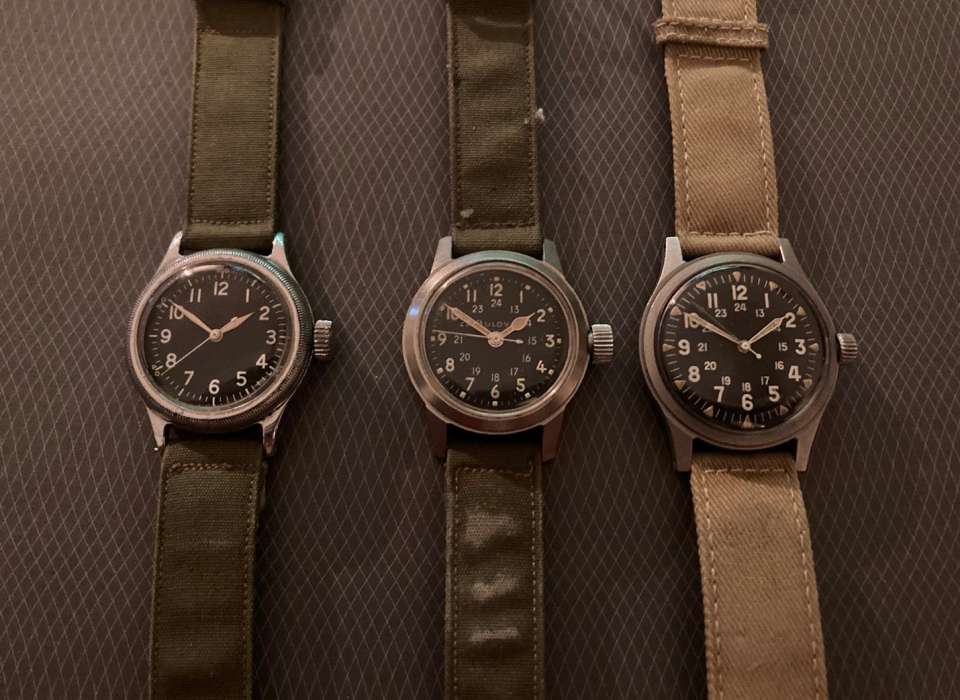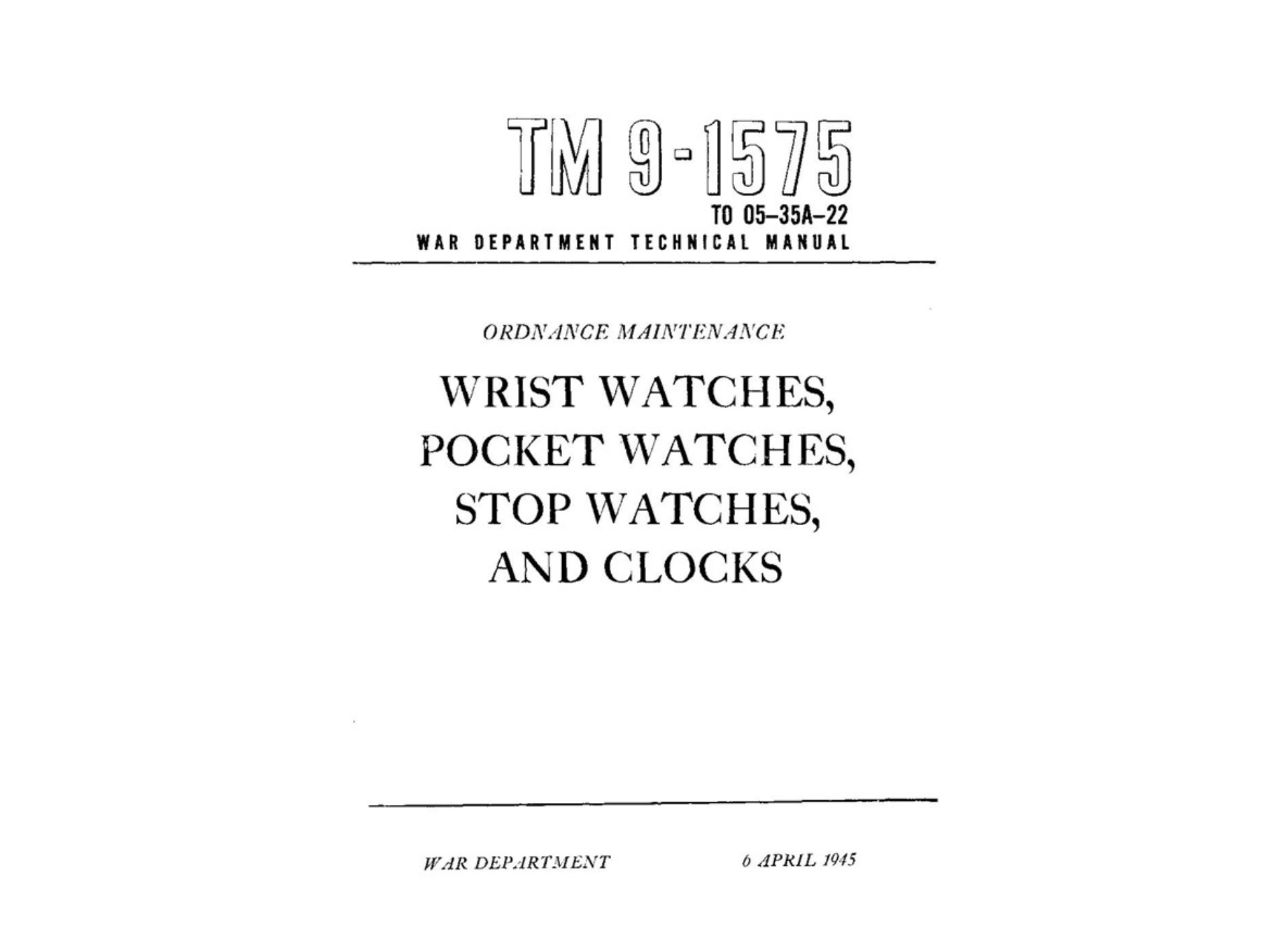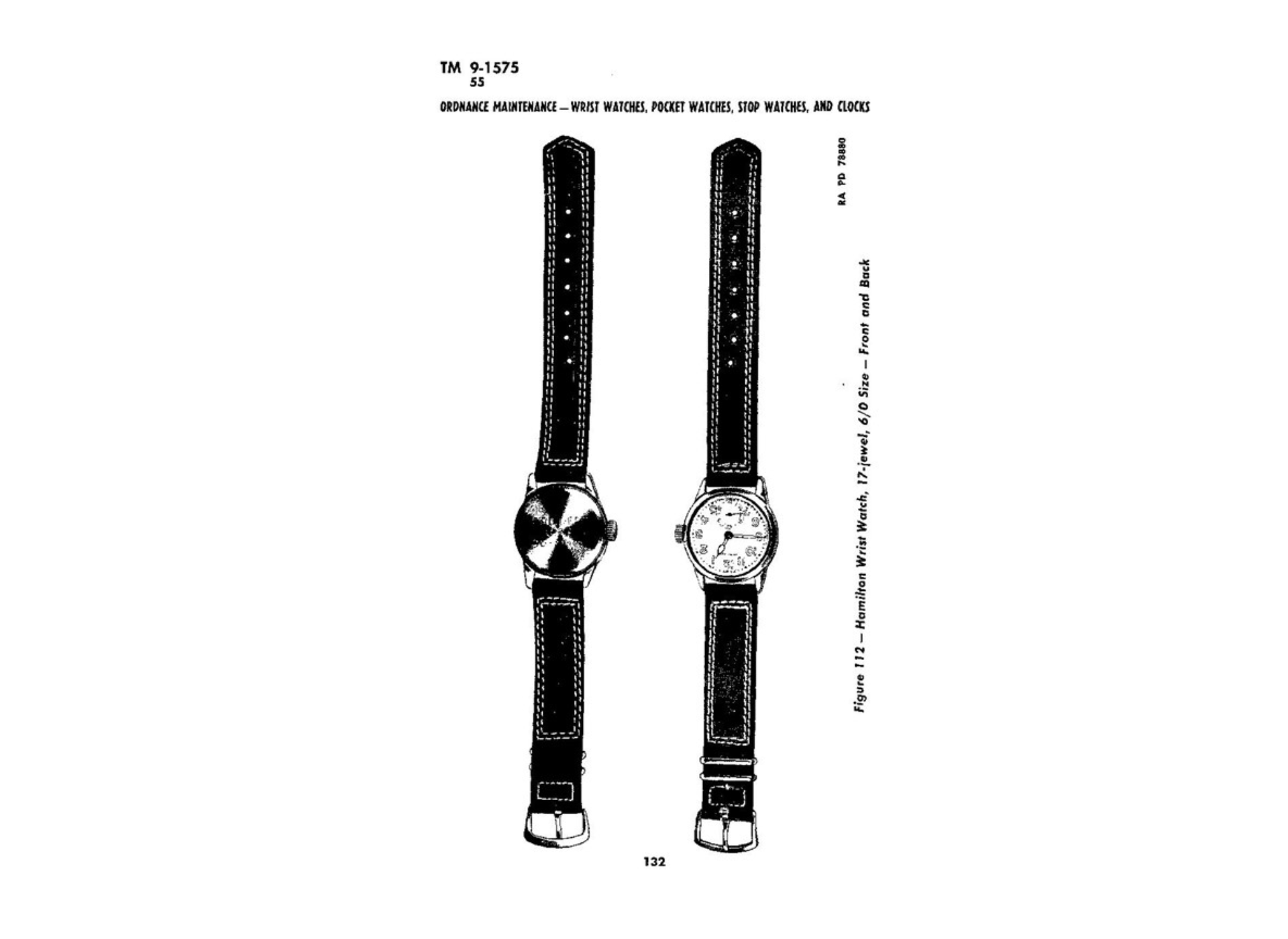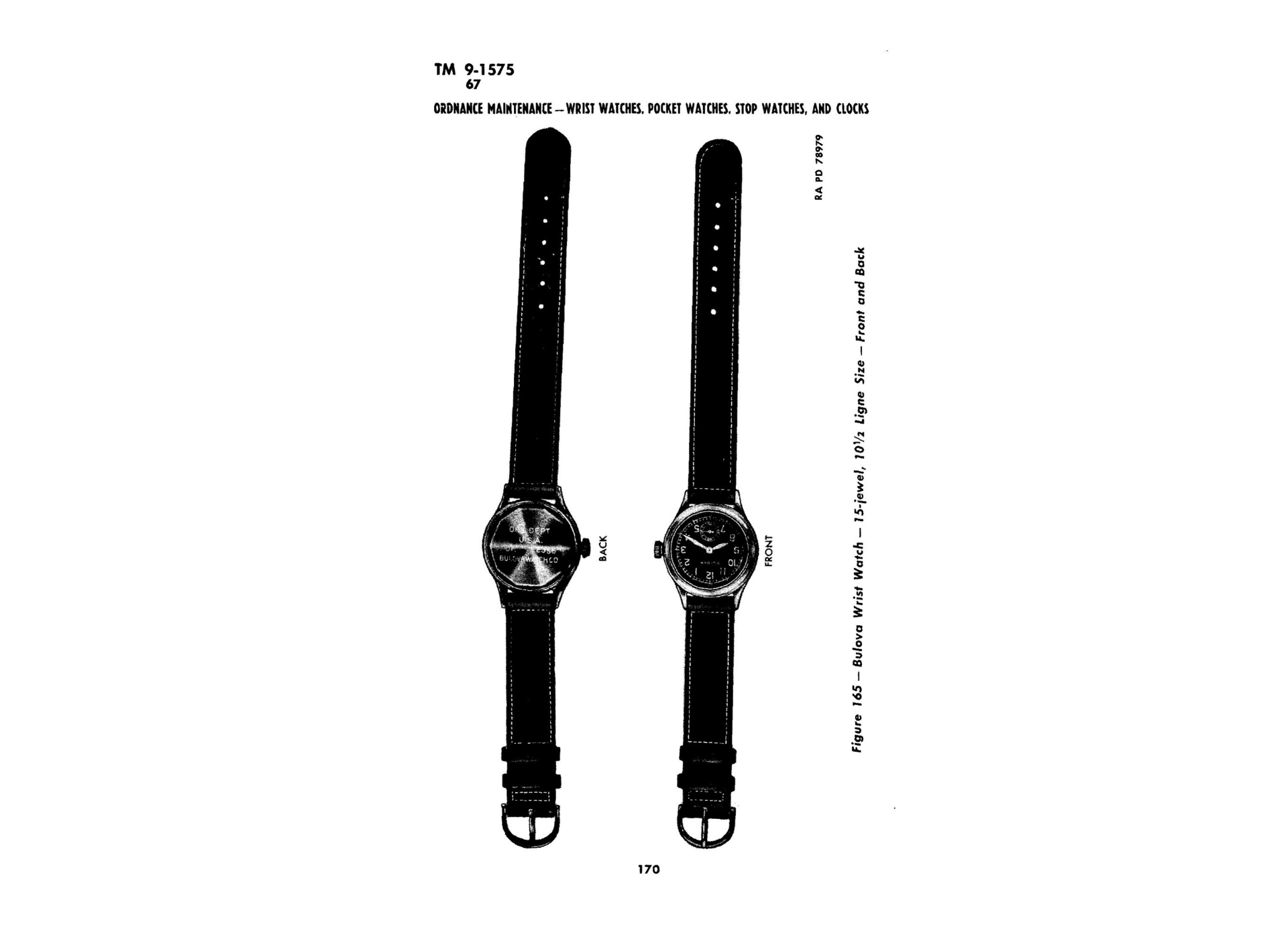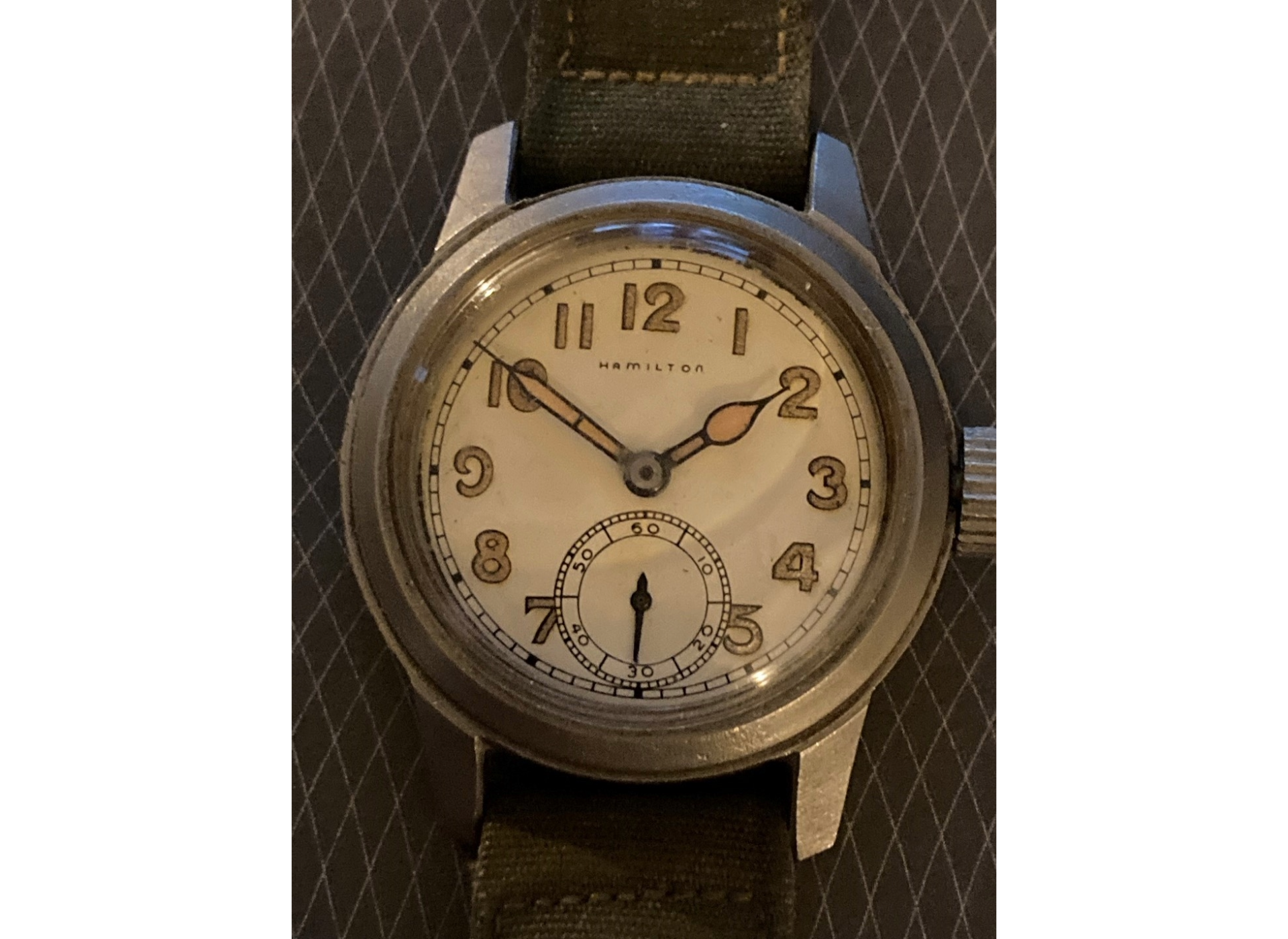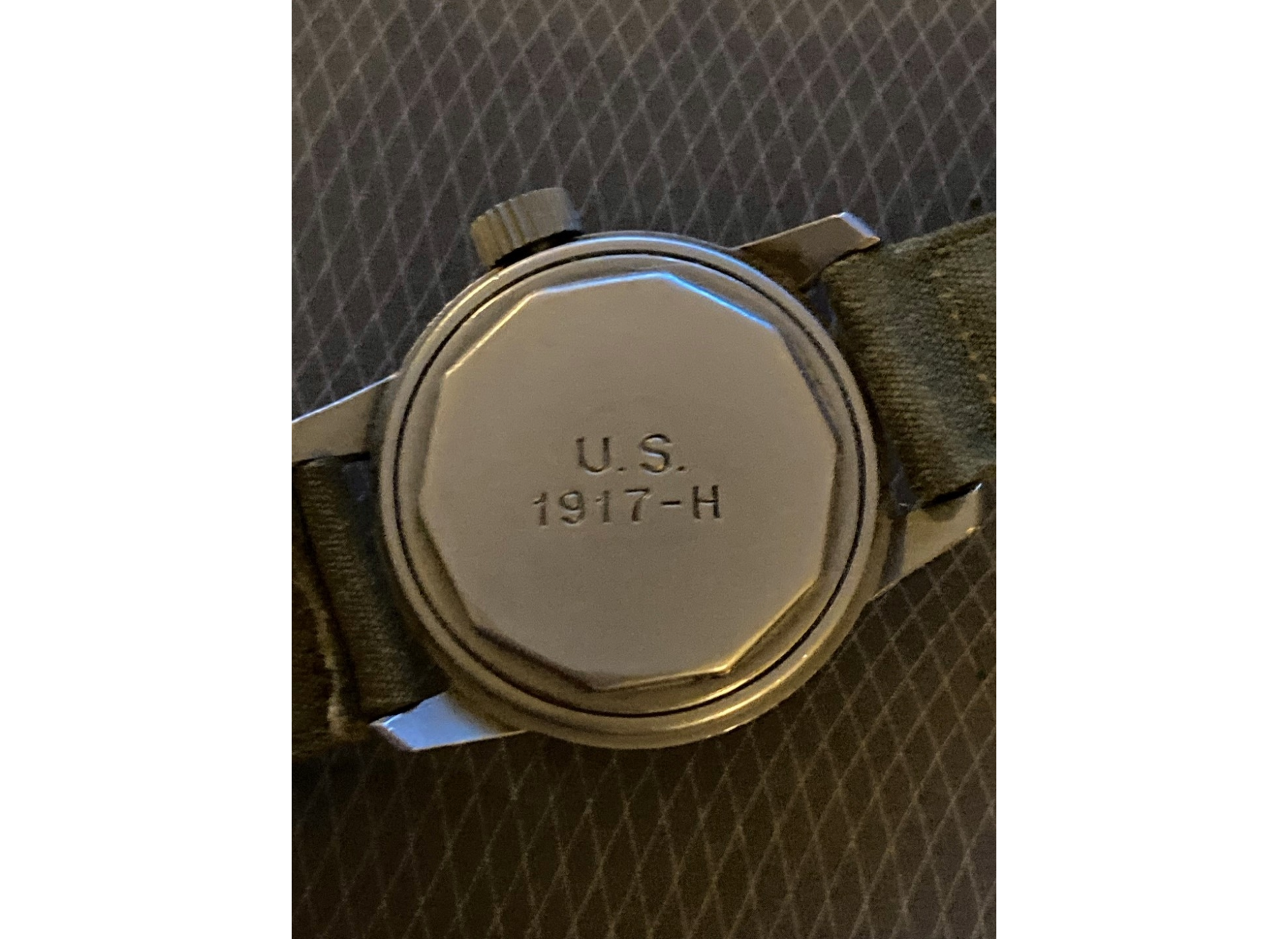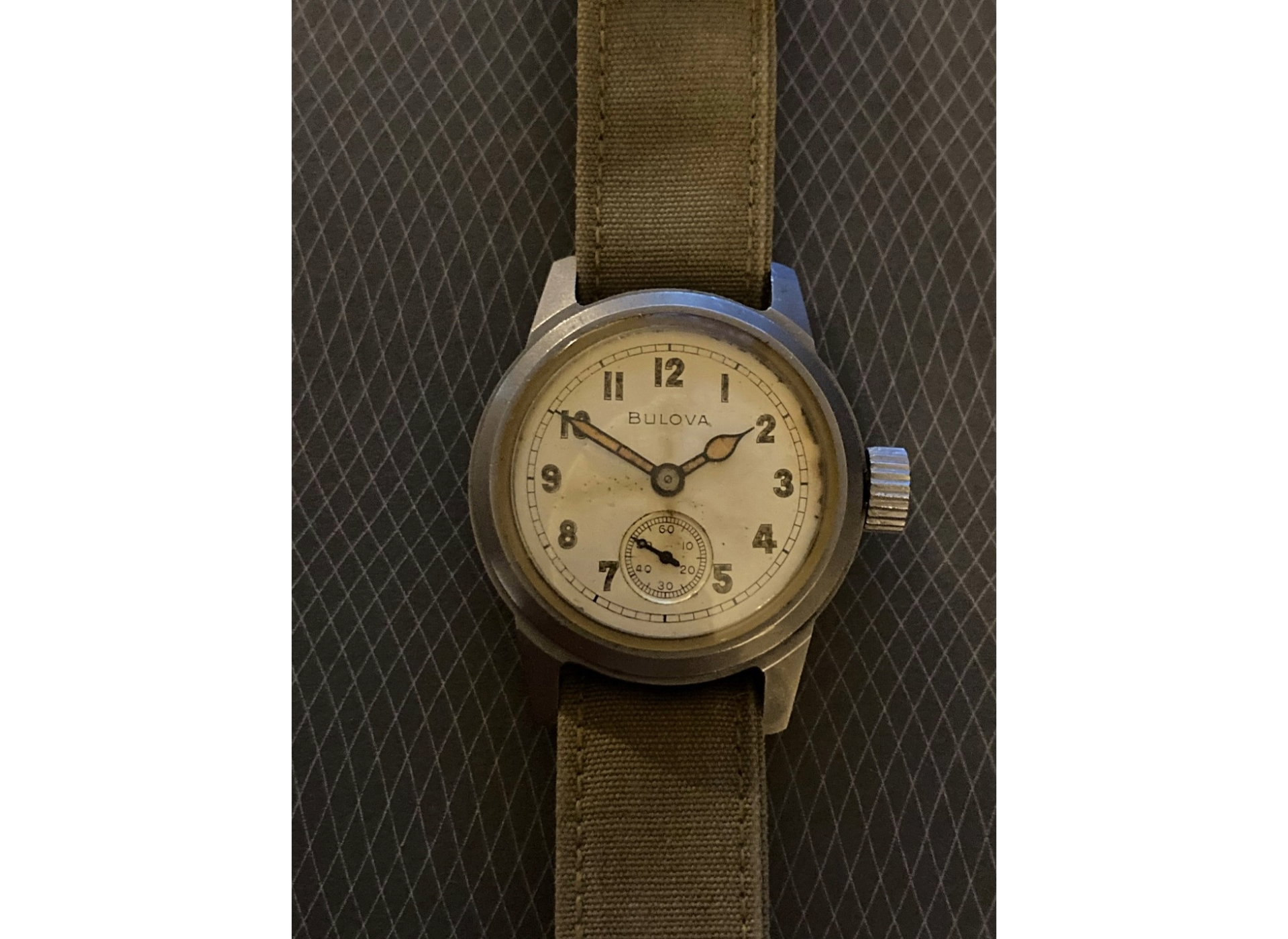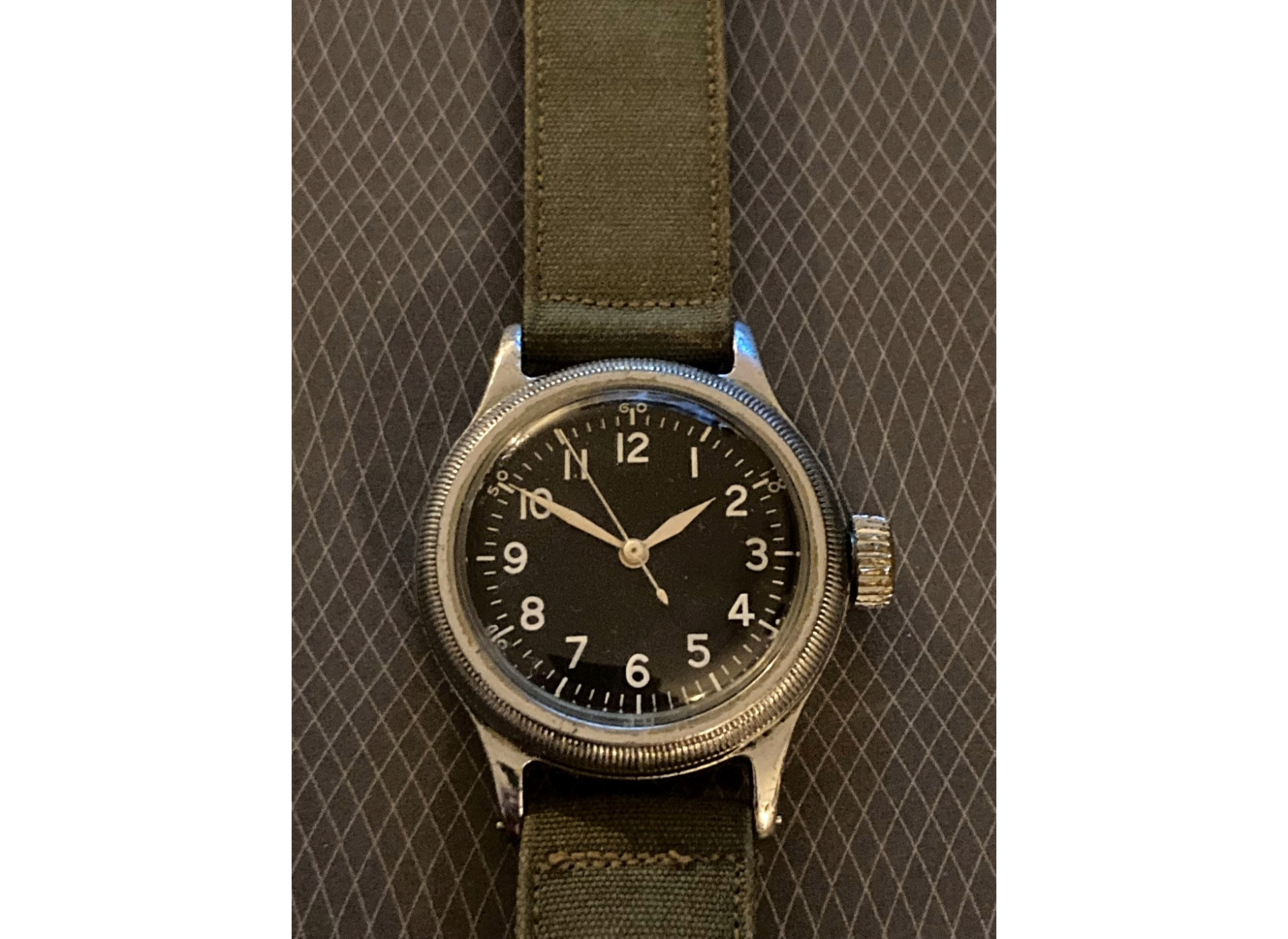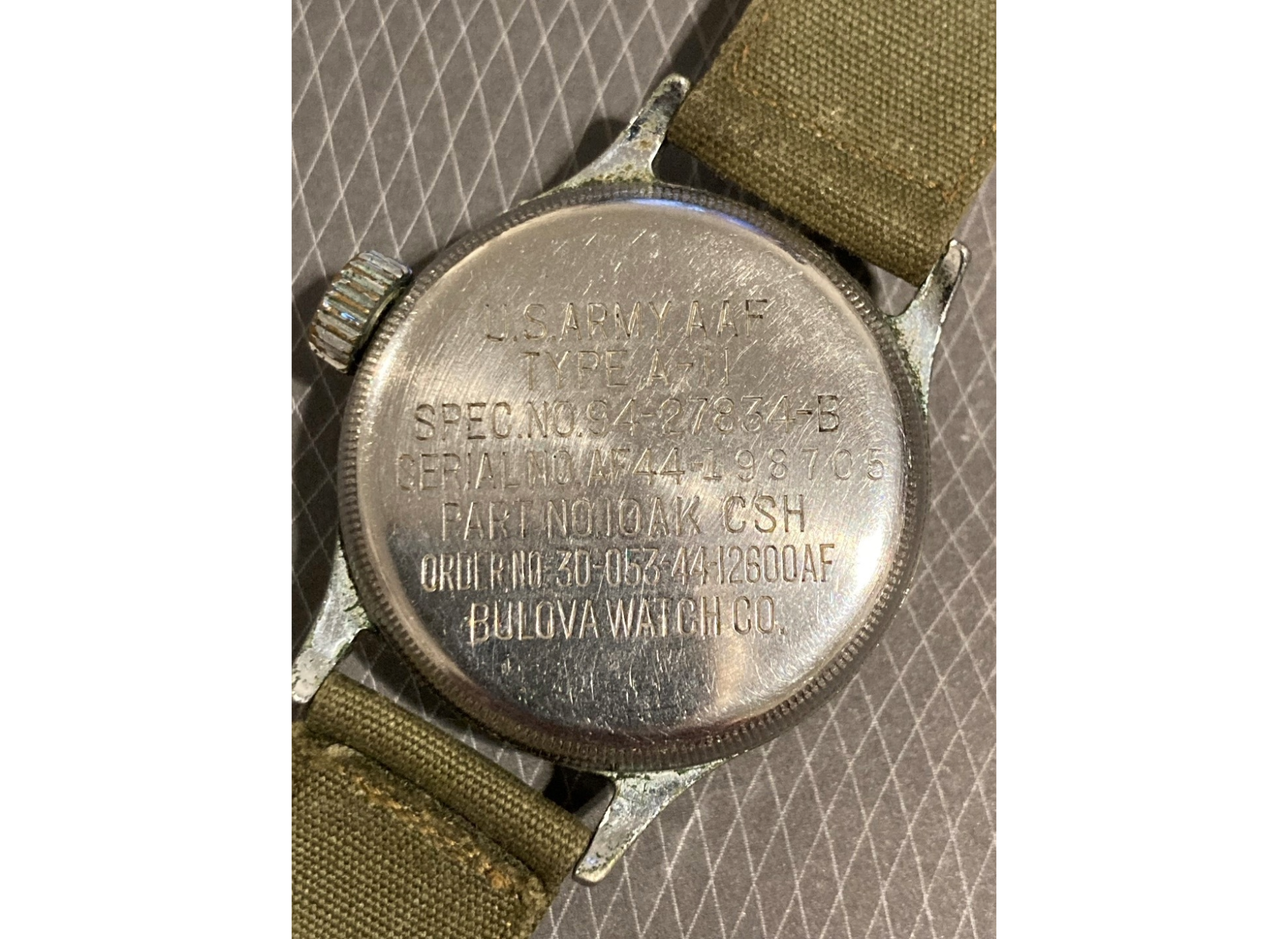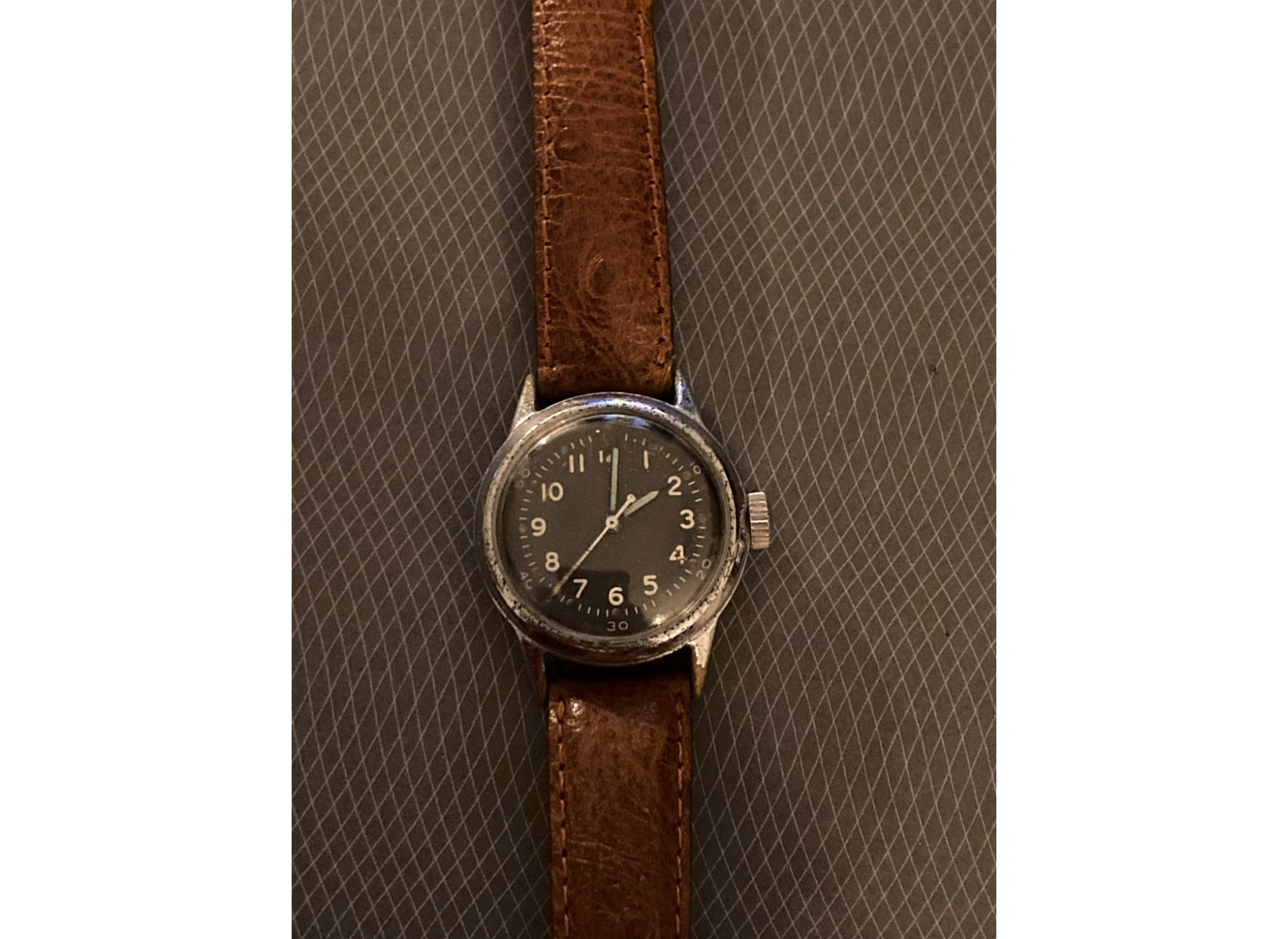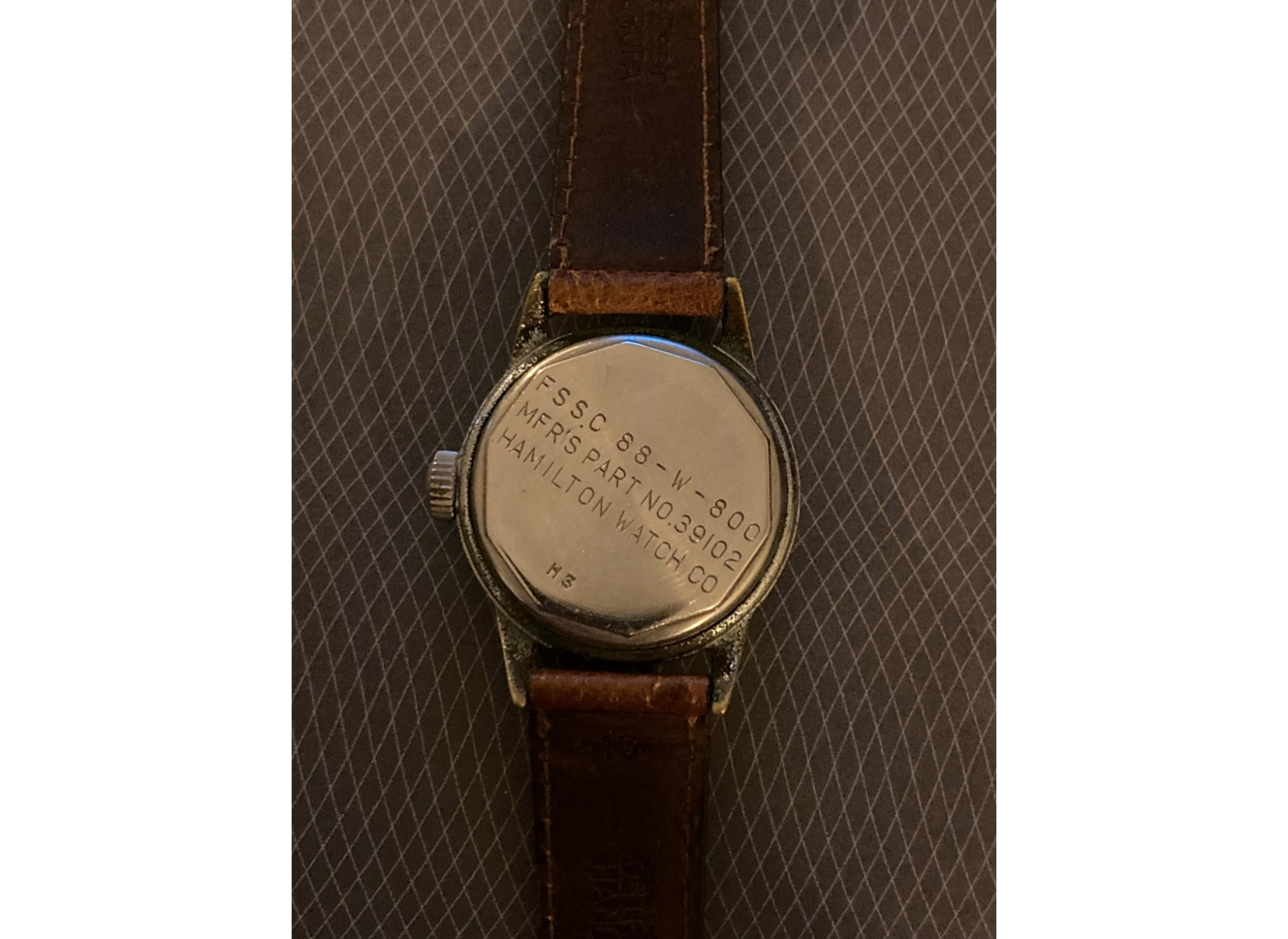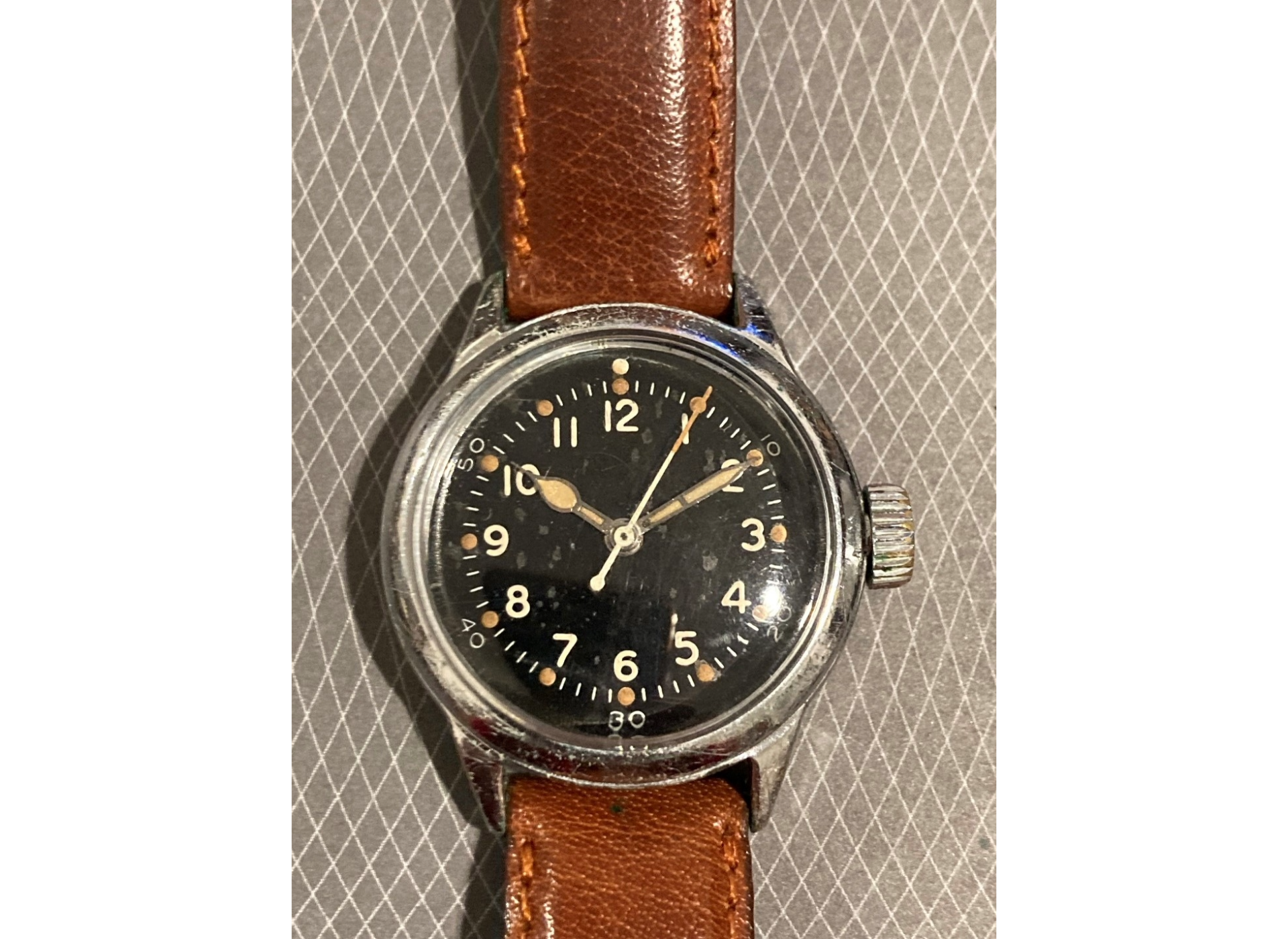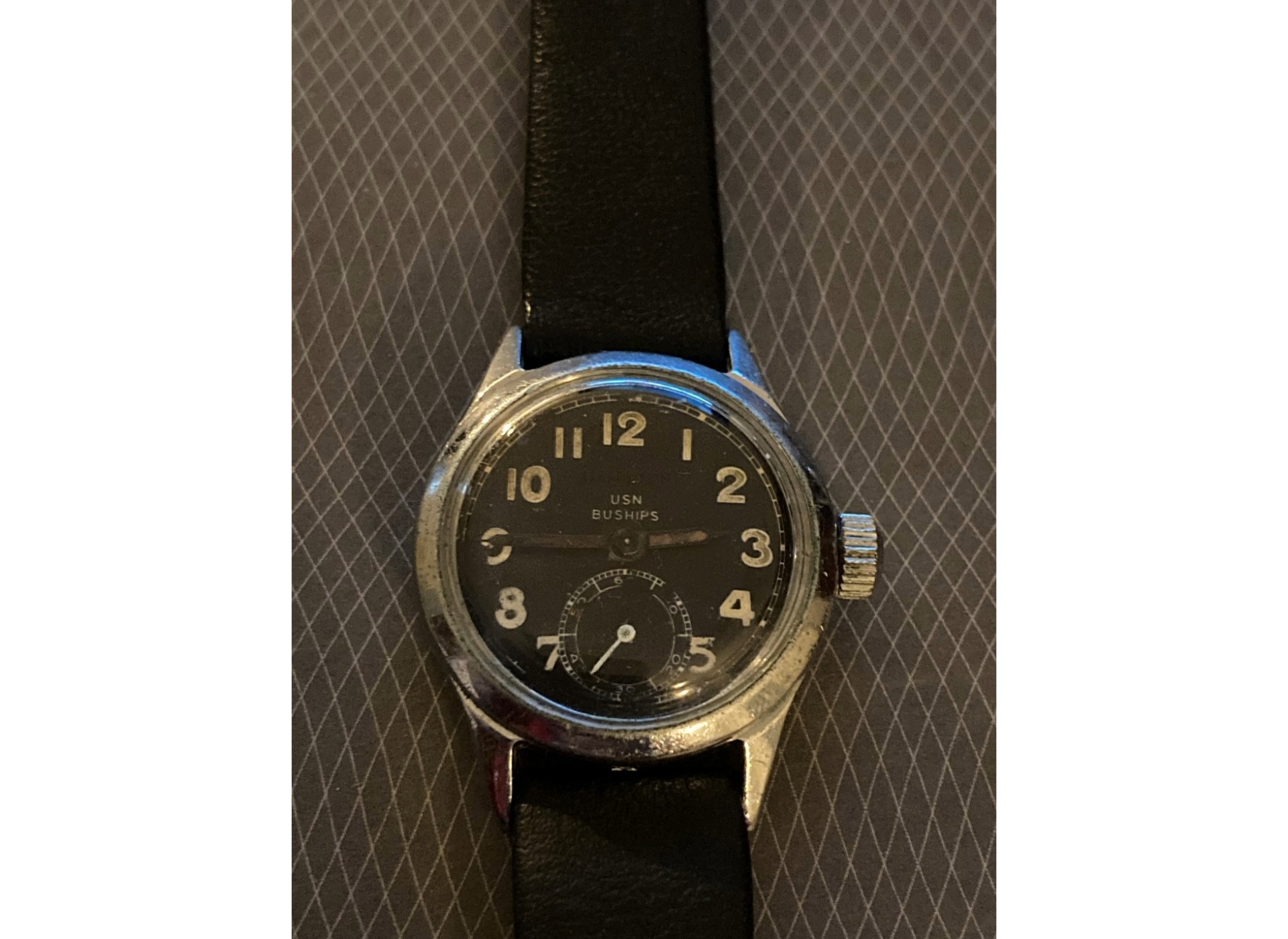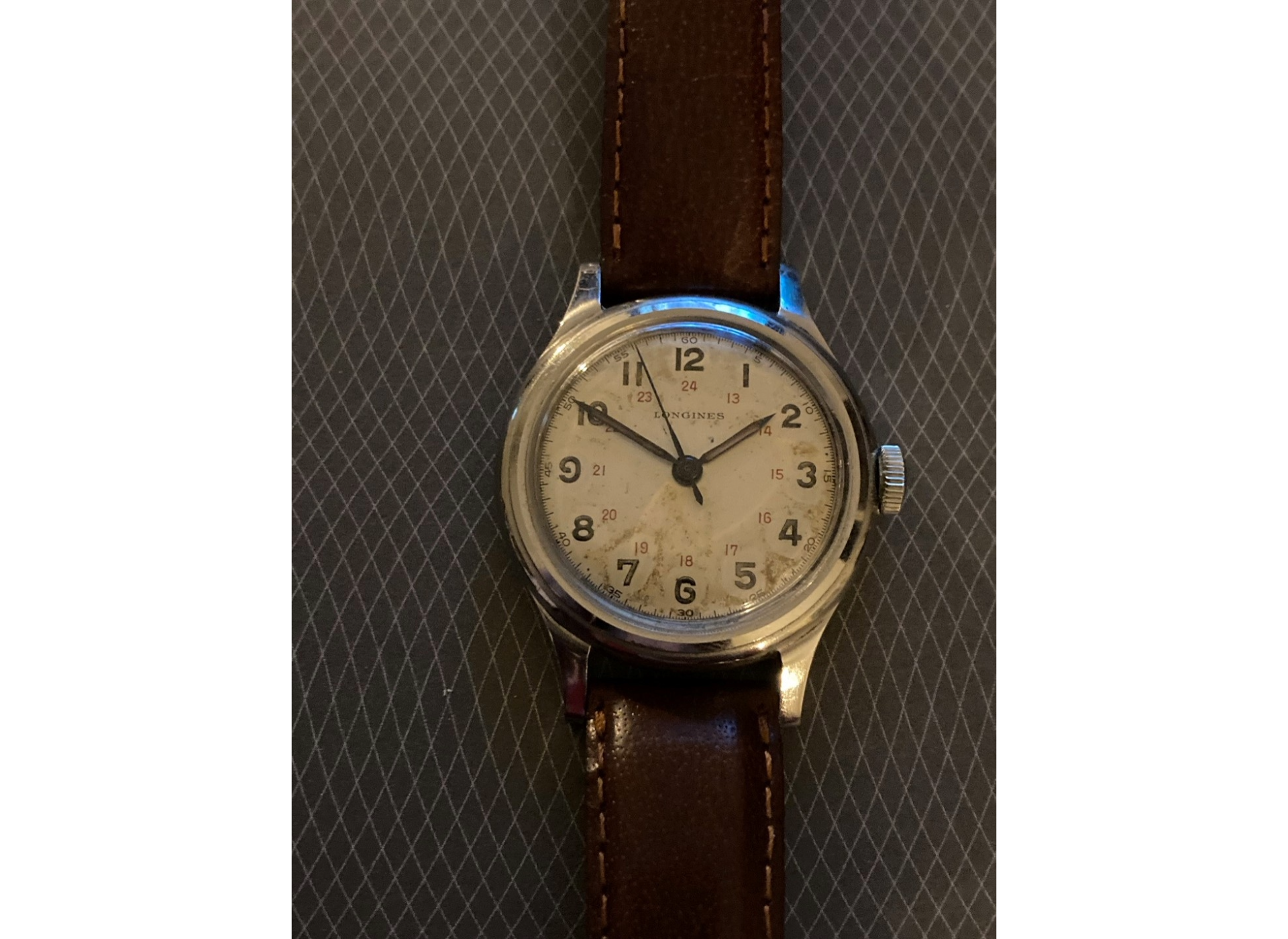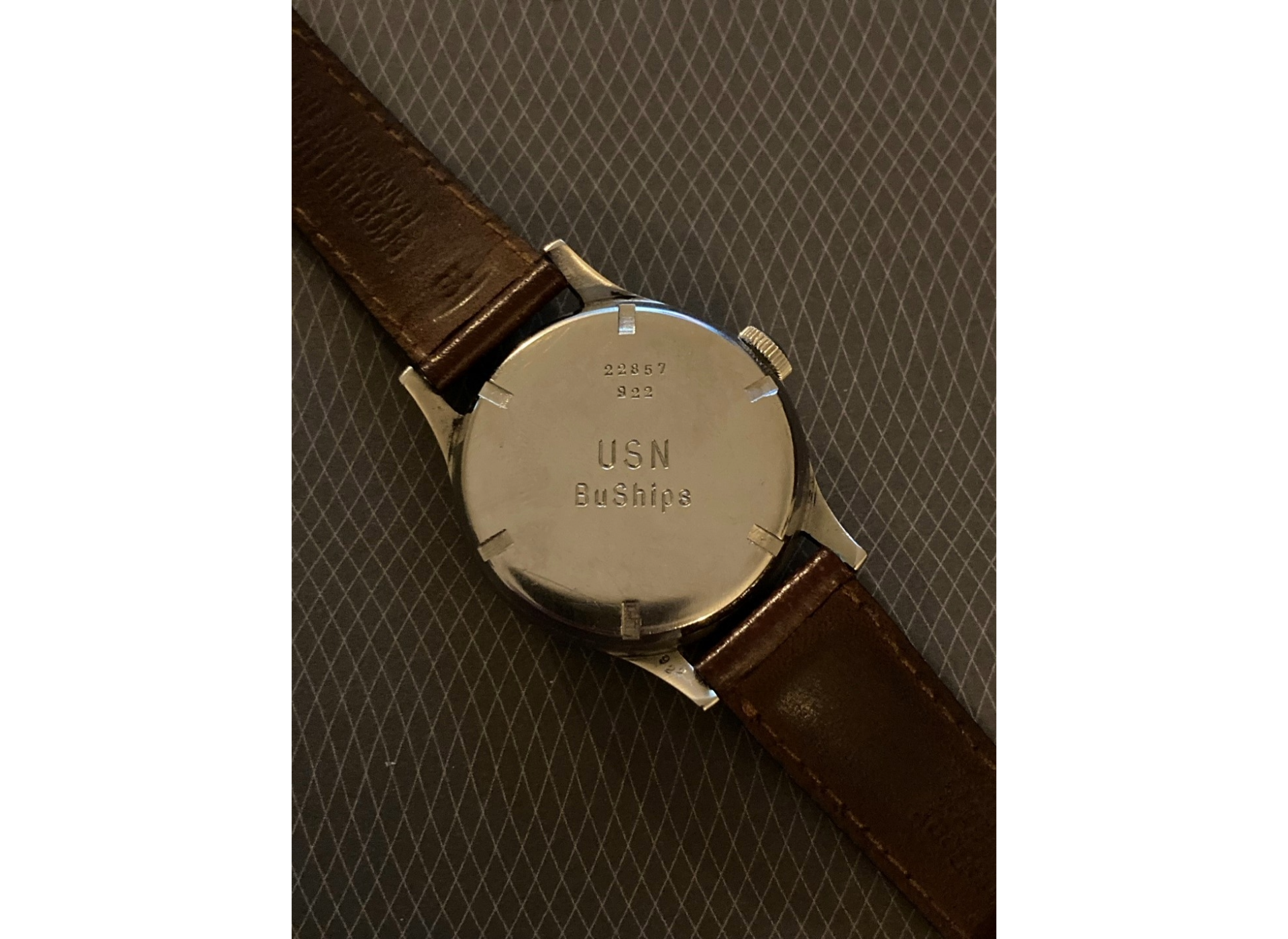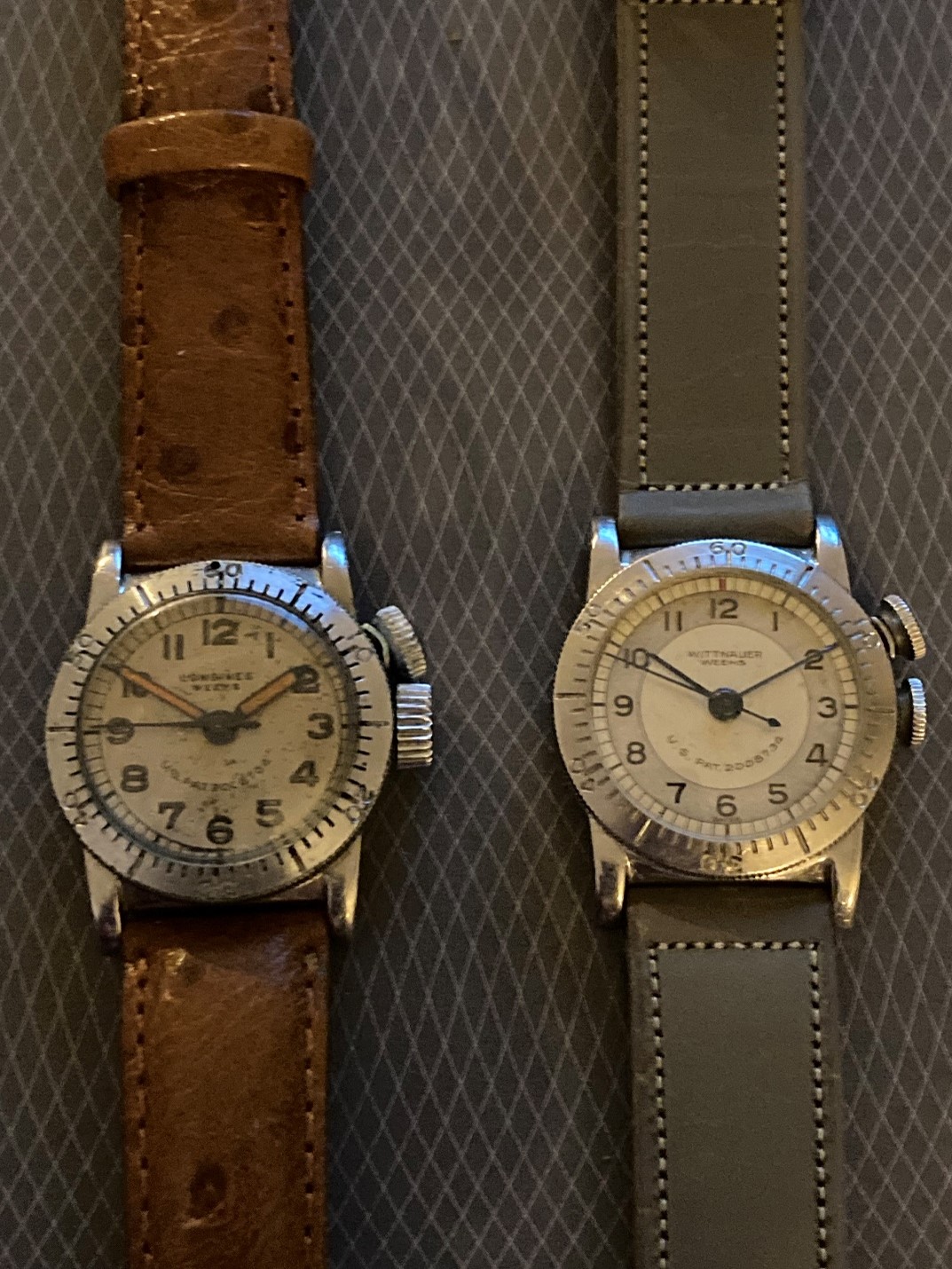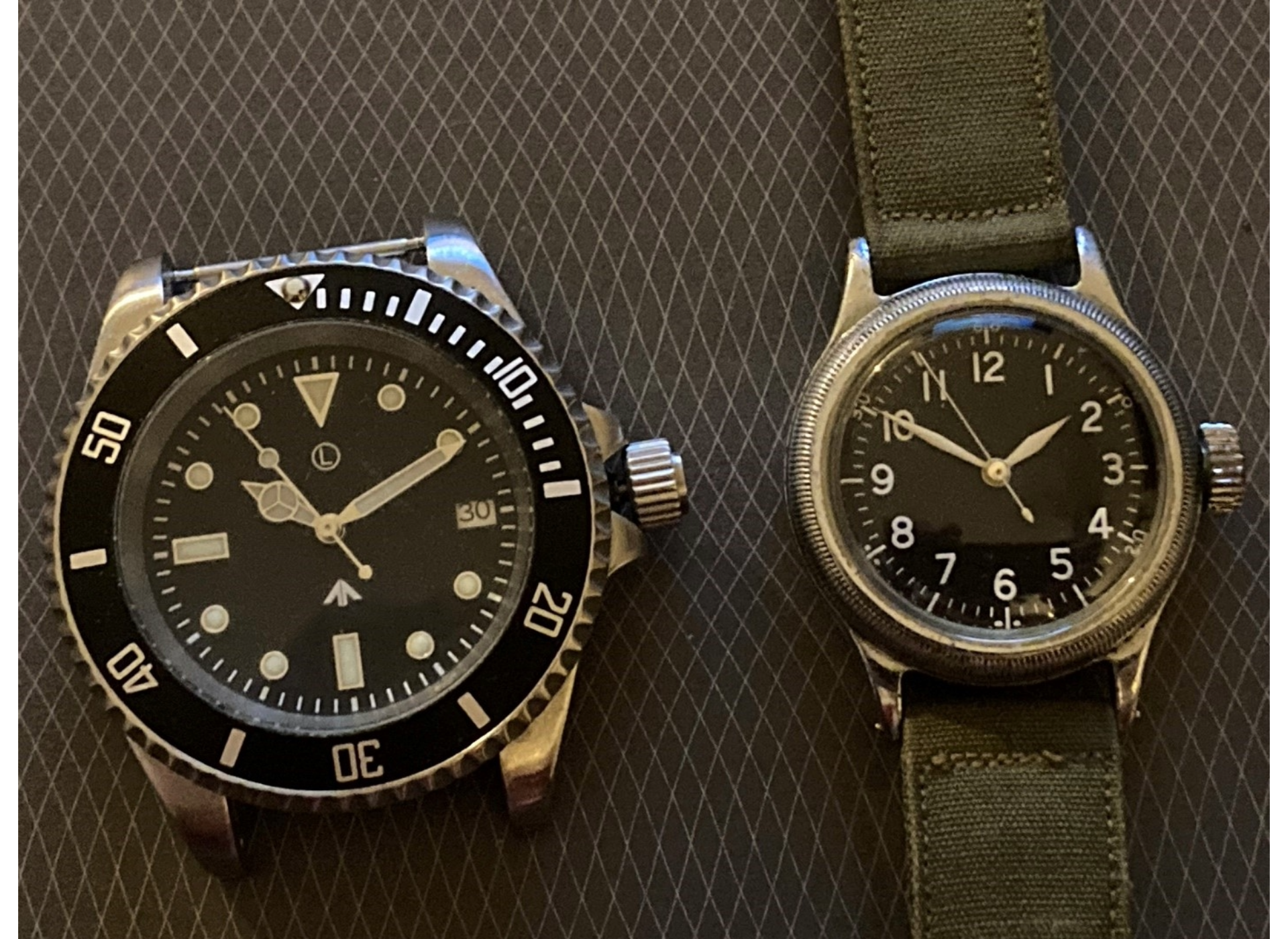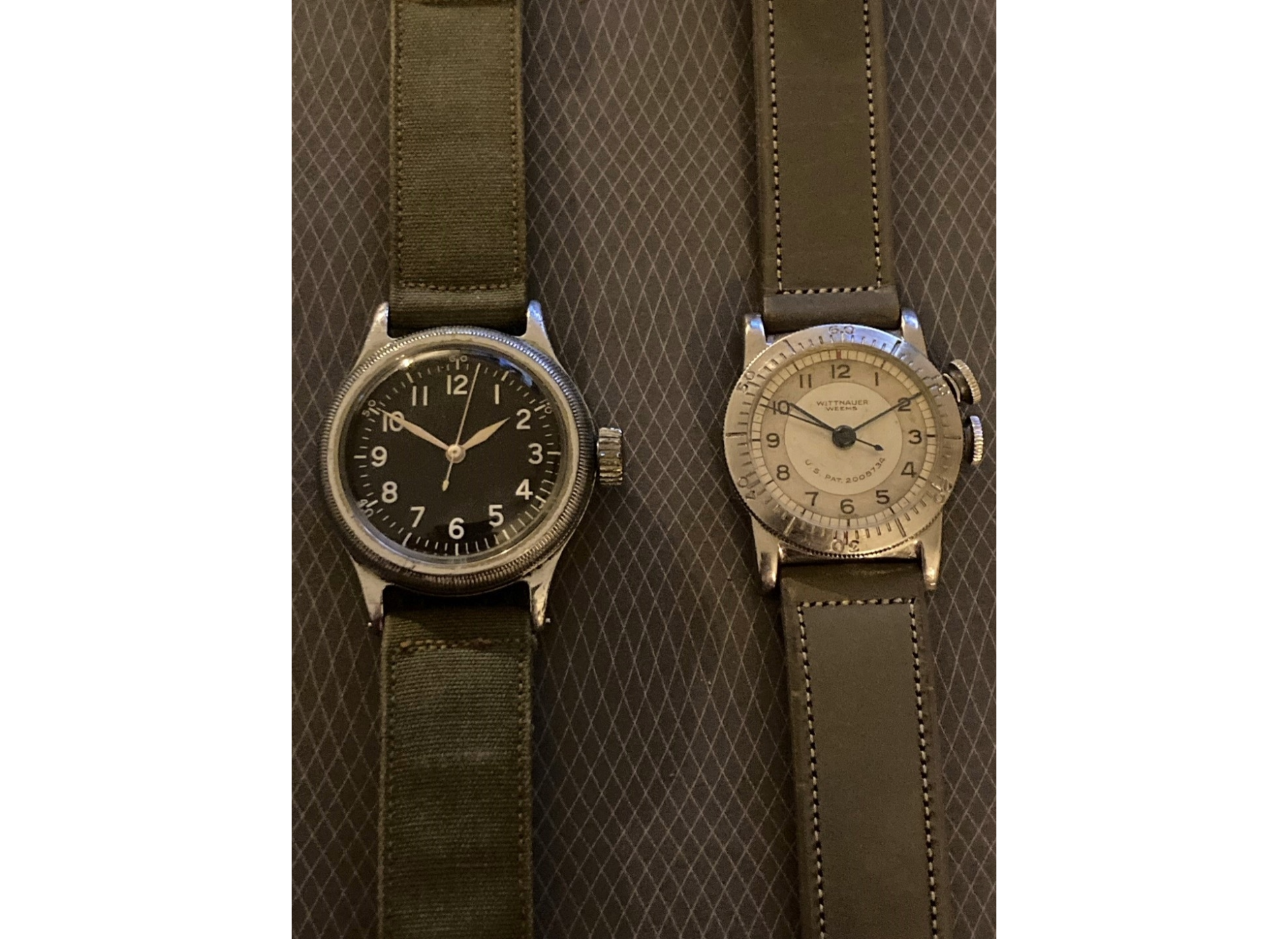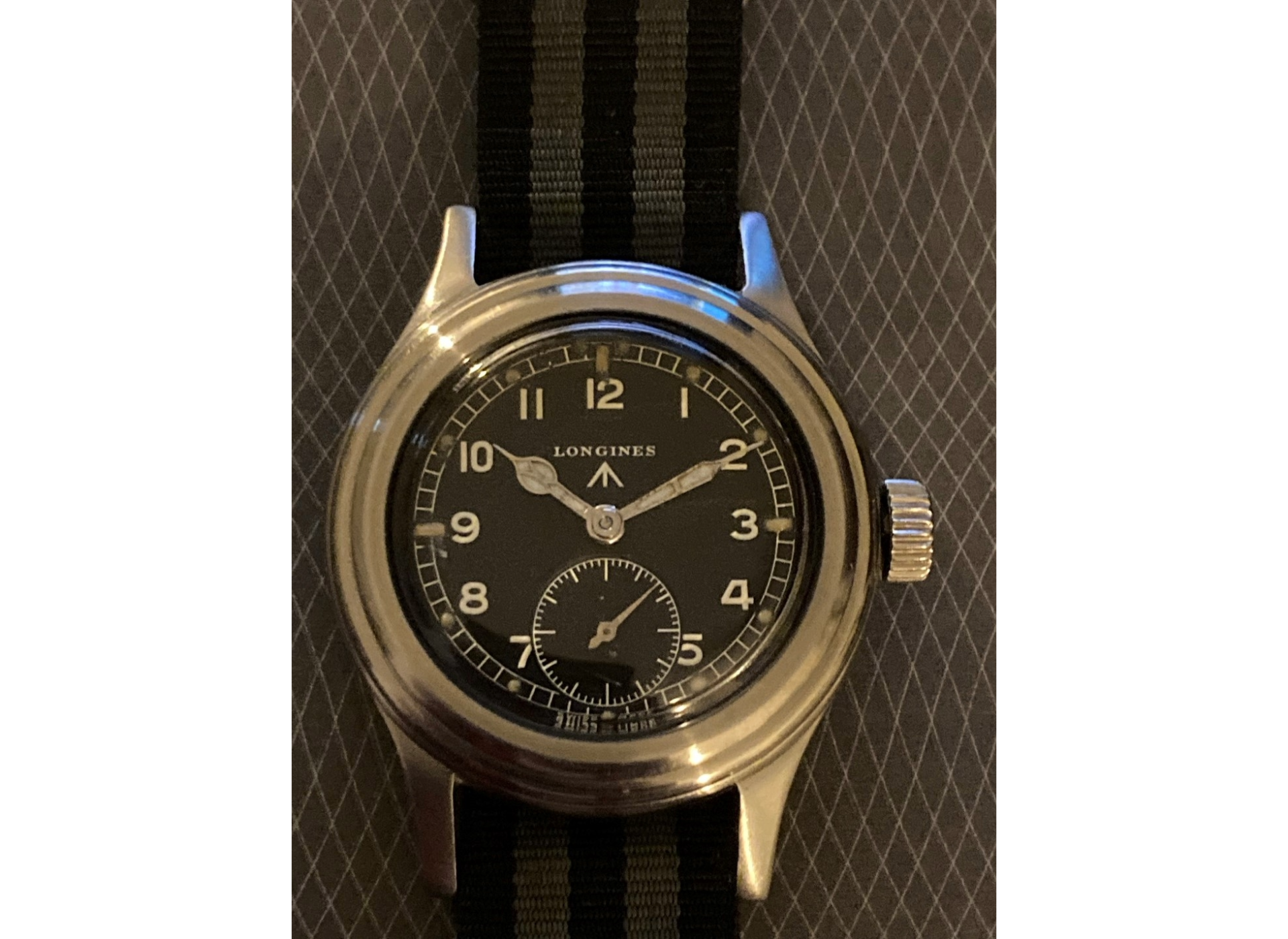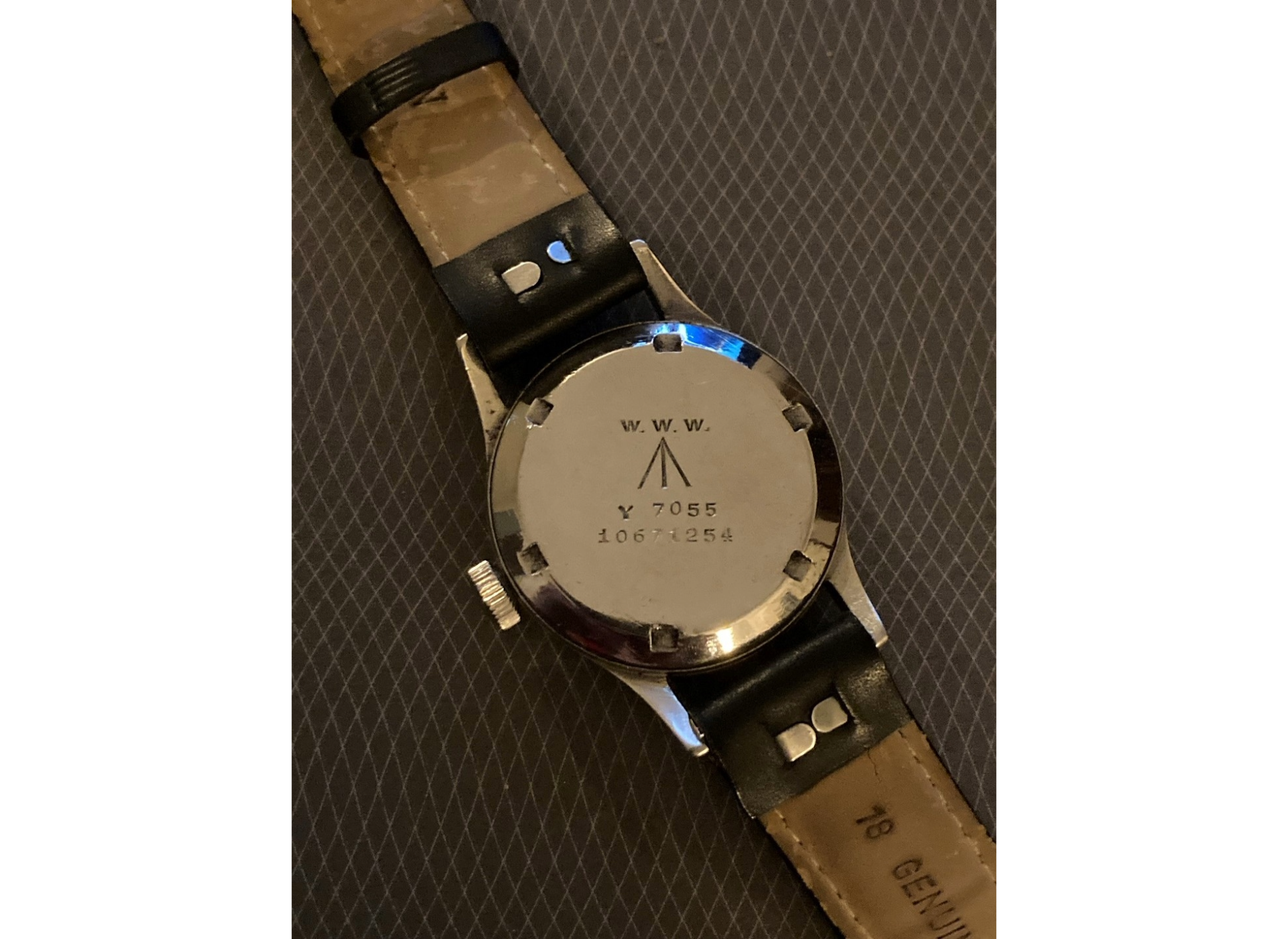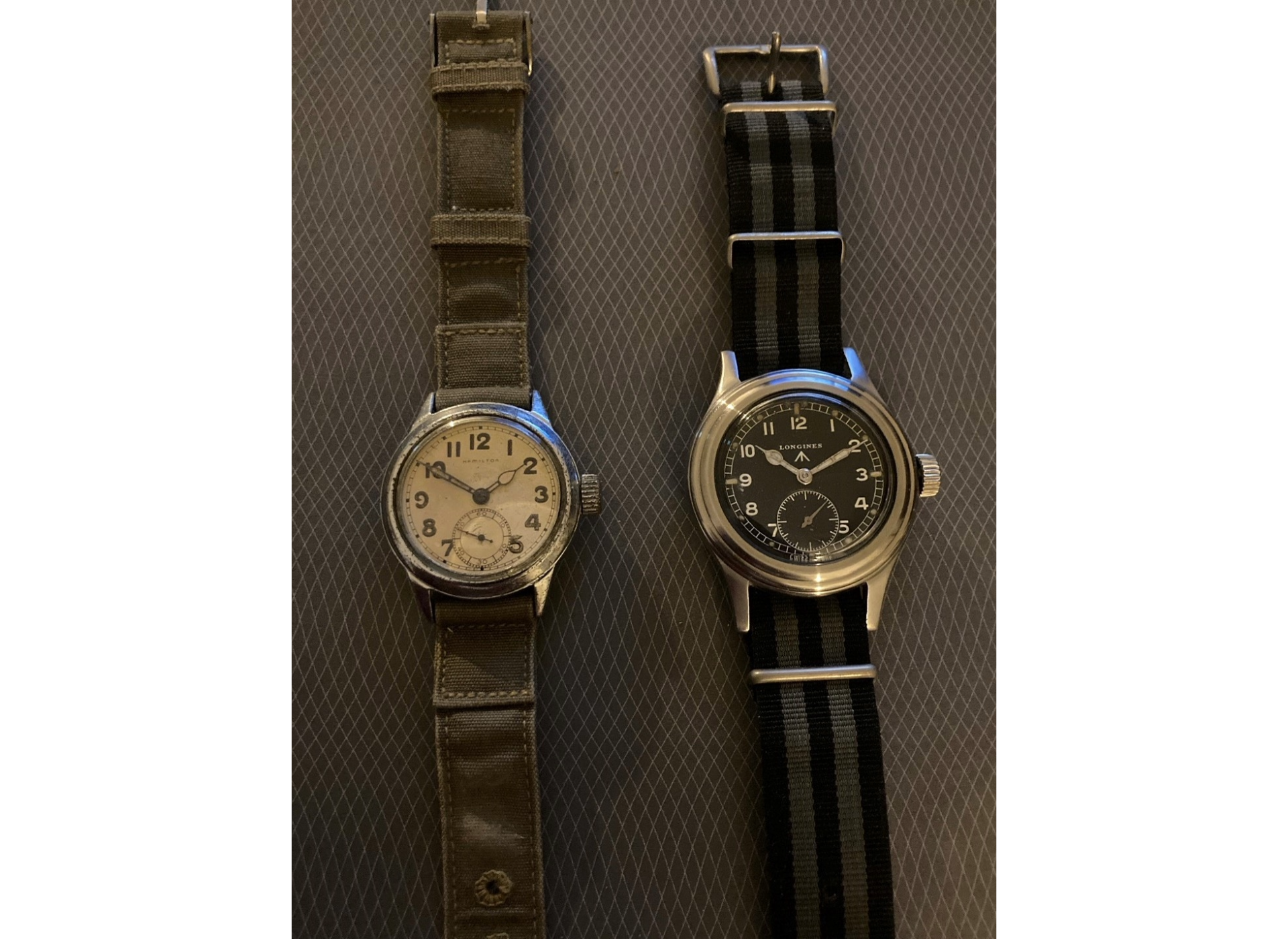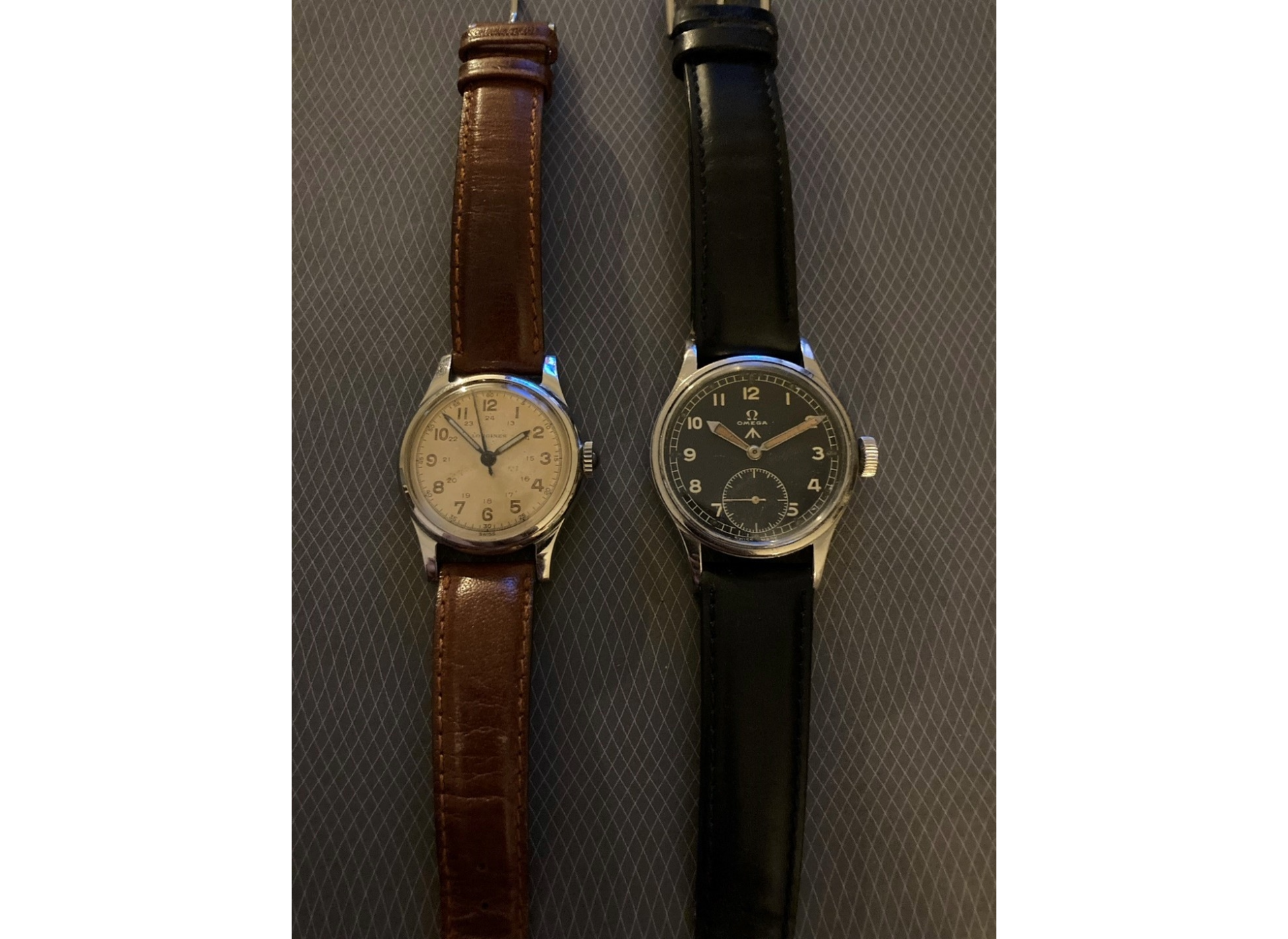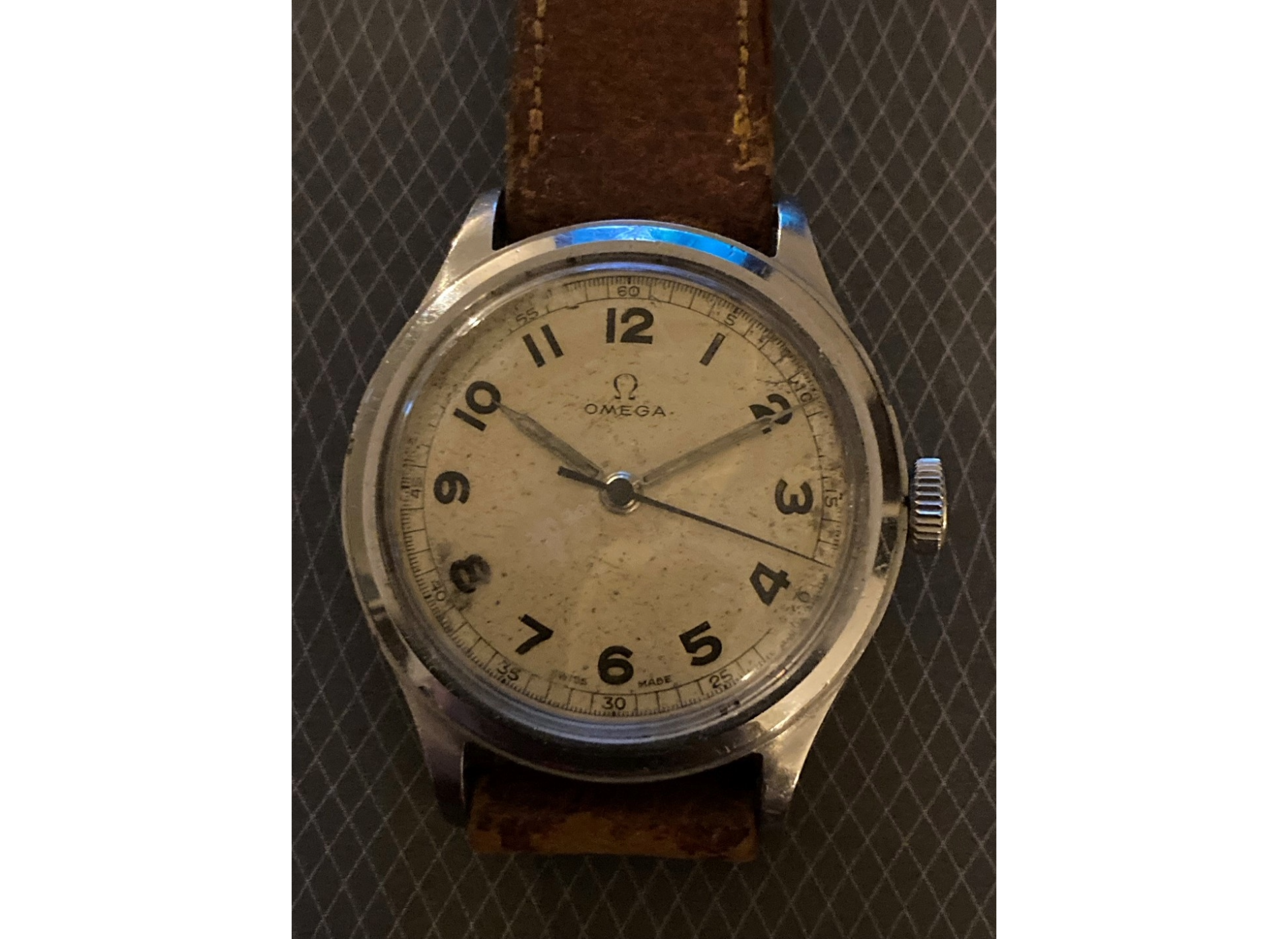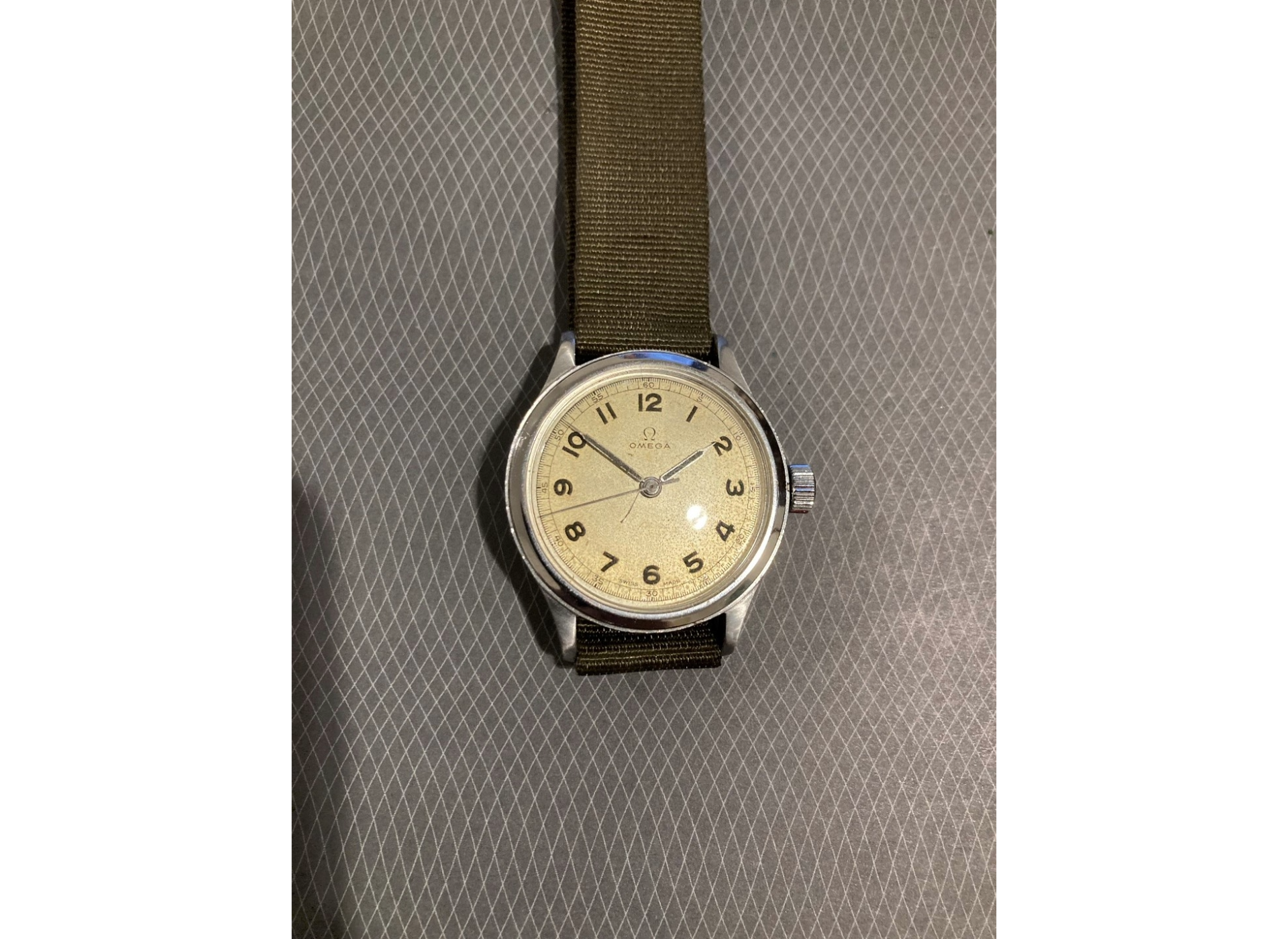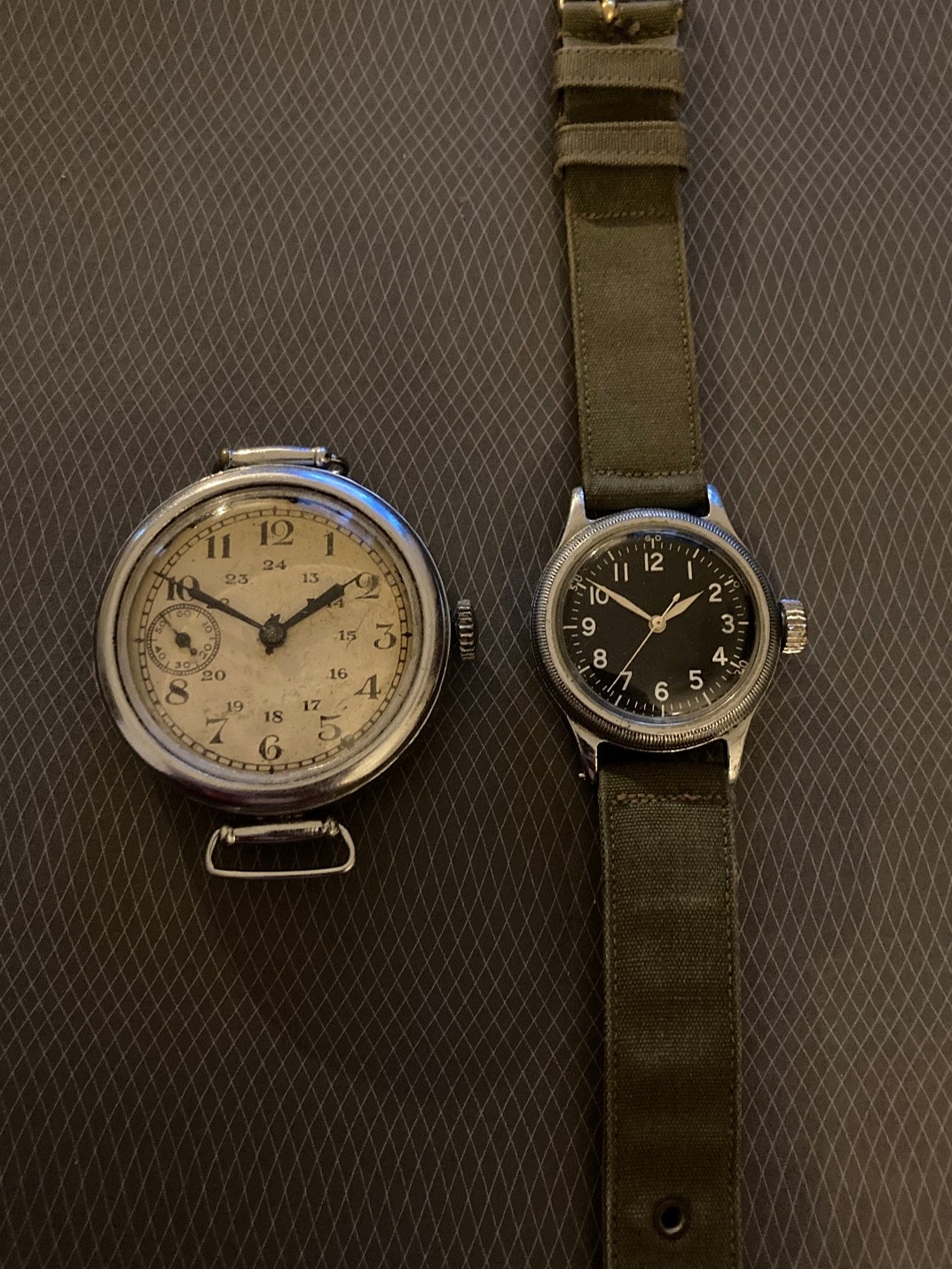Top Photo: Evolution of the military watch, from left: 1944 Bulova A-11, 1952 Bulova A-17, 1969 Hamilton GG-W-113 Pilots watch
In the years leading up to World War II, the United States was a leading manufacturer of wristwatches, especially for the US domestic market.[1] But that industry became an ironic casualty in the postwar world. Waltham, Elgin, and Hamilton were all popular American brands that could trace their roots into the 19th century, but during the war, these three companies—along with hybrid US-Swiss brands like Bulova—produced bomb timers, navigation watches, pilot watches and robust infantry watches.
The need for accurate timepieces can be traced back to ocean navigation when marine chronometers were required for determining longitude. Later, with the emergence of railroads and establishment of set schedules, watches were key to efficient rail management and operation. In fact, it was an 1891 railroad crash in Kipton, Ohio, that spurred the invention of the highly accurate pocket watch that became known as the “railroad watch.”[2] The Waltham Watch Company was one of the first firms to produce a pocket watch that met established the standards for the “railroad” pocket watch. Waltham, located in Waltham, Massachusetts, produced timepieces decades earlier for Union soldiers during the American Civil War. The Elgin Watch Company, founded in Elgin, Illinois, in 1863, was, like Waltham, established to meet the high demand for watches during the Civil War. The Hamilton Watch Company was a relative latecomer, founded in 1892 in Lancaster, Pennsylvania. Bulova was founded in New York in 1875 but set up factories in Biel, Switzerland, as early as 1912.
These four companies made the vast majority of watches for the US military during World War II. The wristwatch itself was a product of World War I. Although there were a few wristwatches made prior to the war, these were marketed to women: Men were expected to carry the larger, more accurate pocket watch. But the realities of modern war and trench warfare soon made an accurate and easily referenced wristwatch the wiser choice. Although pocket watches continued to be made after the war, by the end of the 1920s, the wristwatch was outselling the pocket watch by substantial margins.[3]
There were two common types of wristwatches made for the Army, as noted in the War Department’s Technical Manual 9-1575 issued April 6, 1945 entitled Wrist Watches, Pocket Watches, Stop Watches, and Clocks. There was a basic infantry “ordnance” watch with a seven-jewel movement issued to ground troops generally. Another watch known as the A-11, with a 16- to 17-jewel movement and included a sweep second hand as opposed to the “subsidiary chapter” second hand found at the bottom of the dial at the six o’clock position. (“A-11” was not an official name for the watch— it was the issued specifications for the watch, but the name “A-11” stuck.)
-

Hamilton Ordnance Watch circa 1943
-

Hamilton Ordnance watch reverse side. The “1917” is not the year of manufacture but part of the specification
-

Bulova Ordnance watch for infantry use, circa 1944
The A-11 was a “navigation watch” or “pilot’s watch” due to its superior accuracy, higher jeweled movement, and, most remarkably, the “hacking” ability that allowed the wearer to stop the watch’s movement and the movement of the second hand by pulling out the winding crown. (The A-11 specification actually called the watch an “Avigation” watch.) The hacking ability meant that multiple A-11 watches could be synchronized to the second. In older war movies, there is often the leader of a unit who would say, “Gentlemen, synchronize your watches,” and call out the time. This down-to-the-second accuracy could be crucial.
-

Bulova A-11 Avigation watch for USAAF 1944 contract
-

The A-11 specification decreed a dustproof or waterproof casing; extreme temperature resistance; a high-quality, a minimum of a 15-jewel hacking movement with a power reserve of 30-56 hours and a tolerance of losing or gaining 30 seconds per day; and a black dial with white numerals.
The US Navy had an equivalent to the A-11 which was marked as the FSSC 88-R-800. These were not quite as common as the A-11 and were primarily made by Hamilton. Approximately 3,000 of this type were made.
-

US Navy equivalent to the A-11, a rare Hamilton FSSC-88-W-800 Pilots Watch
-

Reverse of the Hamilton
-

A 1944 Hamilton US Navy pilot watch
The US Navy had higher general standards for watch quality compared to the Army and tended to only use Hamilton and Longines watches. Longines, a Swiss company, had a high reputation for quality and was closely associated with aviation since 1927 when Charles Lindbergh used a Longines for his transatlantic flight.
-

A 1945 Hamilton, the US Navy equivalent to the Army’s Ordnance watch
-

A 1945 Longines for the US Navy
-

Reverse of 1945 US Navy Longines marked “BuShips” for Bureau of Ships
Longines also produced a navigation watch used early in the war called the Weems,[4] named after Lieutenant Commander Philip Van Horn Weems (1889–1979). A 1912 graduate of the Naval Academy, he eventually served as a navigation instructor at Annapolis. He invented the Weems watch, which had a rotating bezel, or outer ring, calibrated from 0 to 60 seconds and could be set to a highly accurate time signal (usually by radio). A careful observer can spot Tom Hardy’s Royal Air Force pilot in the movie Dunkirk wearing a beautiful example of an Omega version of the Weems
One thing that will strike the modern viewer of WWII-era US military watches is their small size compared to later watches. The A-11 measures 30mm, whereas by the 1960s, 36mm to 38mm was the more common size for the average watch for men. Today, many wristwatches are as large as 40mm.
-

Modern military Rolex Submariner watch (approximately 38mm to 40mm), left, compared to a 1944 Bulova A-11
-

A 1944 Bulova A-11, left, and 1943 Weems
By comparison, the British Army created the “WWW” (Wrist. Watch. Waterproof) standard for its military watches. There were 12 different Swiss manufacturers: Buren, Cyma, Eterna, Grana,
Jaeger-LeCoultre, Lemania, Longines, International Watch Company (IWC), Omega, Record, Timor, and Vertex. Of these companies, the ones that still exist and are most famous are Jaeger-LeCoultre, Longines, IWC, and Omega. The case sizes were 35mm to 38mm, and the dials were black with white numbers. All had at least 15-jewel movements. The back was marked WWW. The dial and the back were also marked with a version of what is called the “Broad Arrow.” This is a governmental supply mark that is still used on British government equipment and dates back to Sir Philip Sidney, Joint Master of the Ordnance in 1585.
-

A 1945 Longines WWW watch, usually issued to officers
-

Reverse of the 1945 Longines WWW. Note the “Broad Arrow” mark that is the traditional symbol of UK government property.]
-

A Hamilton Ordnance watch, left, and a Longines WWW
-

A 1945 Longines US Navy issue, left, and a 1945 Omega WWW watch
-

By 1945, the US Army in Europe was also buying Swiss watches to meet demand, such as this Omega with an unusual treatment of the 3 and 9 numerals.
-

Because of their cost in the 1940s, watches were prized possessions. Captured enemy watches were also popular souvenirs. In Europe, the prevalence of Swiss watches due to that nation’s neutrality resulted in their introduction into the Americans military; this was to be the downfall of the American watch industry. Elgin, Waltham, and Hamilton began the shift back to manufacturing watches for the civilian market in late 1945 and early 1946. But the Swiss had a tremendous head start, and Rolex, Longines, and Omega in particular had an established reputation as precision timepieces. The expression “running like a Swiss watch” came to mean in the postwar years that a plan or event, especially a complex one, was running smoothly.
Waltham was the first casualty, with the company declaring bankruptcy in 1949. Attempts to keep the company afloat and expand into other areas of manufacturing dragged on until 1957. Elgin was somewhat more successful, but by 1968, it too was closed, and the “Elgin” name was sold to different companies.
Hamilton was still a highly respected name among watch buyers and received military contracts to produce military watches well into 1970. Hamilton showed innovation when it introduced an electric watch powered by a battery in 1957. This model, the Ventura, had a futuristic look that captured the imagination of consumers after Elvis Presley wore one in the movie Blue Hawaii. (A reissue in quartz featured prominently in the movie Men in Black.) But this was the last great moment for Hamilton. It merged with Swiss manufacturer Buren (makers of British Army WWW as mentioned above) and in 1969 closed its plant in Lancaster. By 1974, Hamilton had been acquired by the Swatch Group, the largest watch company in the world.
Hamilton watches are still available today, but they are made in Switzerland. They have an entire line that strongly resembles the military watches of World War II called the Khaki Field watches. Additional Hamilton models are the Ventura and the “pilot” watch, a reproduction of a military watch Hamilton made in the early 1970s before being absorbed by Swatch.
The Swiss faced their own moment of near extinction with two separate challenges: first was the “quartz crisis” of the 1970s and early 1980s when quartz movement watches began to widely replace mechanical movements. Japanese watches rapidly displaced the Swiss in the watch field and become more popular globally. The second challenge was the rise of the mobile phone. Younger people tended to rely on the ubiquitous cellphone over watches. Given the popularity of the cellphone, watches are considered by some to be obsolete. Militaries around the world are among the last holdouts using wristwatches.
Watches, once an essential part of a person’s possessions, are now chosen for fashion purposes as opposed to the functionality they provided in earlier eras. Much like other daily requirements of previous eras—fountain pens, cuff links, cigarette holders, and detachable collars—the mechanical watch still exists more out of nostalgia than need.
Additional Reading
Knirin, Konrad. British Military timepieces. Essen, Pomp Verlag 2009
War Department. Wrist Watches, Pocket Watches, Stop Watches, and Clocks. TM 9-1575.Washington, DC: War Department,1945
Wesolowski, Z. A Concise Guide to Military Timepieces (1880-1990), Ramsbury, The Crowood Press. 1999
Whitney, Marvin. Military Timepieces. Cincinnati, American Watch Makers Institute, 1992
[1] I would like to thank the donors who own these watches for making them available to me for this article.
[2] https://postalmuseum.si.edu/the-great-kipton-train-wreck; https://americanhistory.si.edu/collections/search/object/nmah_1204723
[3] https://www.theatlantic.com/international/archive/2015/05/history-wristwatch-apple-watch/391424/
[4] (US Patent 200873)
Walter Wolf III
Walter Wolf joined the Museum in October 2019 as the Museum’s first intellectual property Rights Manager in the Curatorial Department. Walter has a Bachelor’s degree in Modern European History and a Juris Doctor degree in law. He also has a certificate in Espionage and Covert Operations from the University of New Orleans.
Cite this article:
MLA Citation:
APA Citation:
Chicago Style Citation:
